Like Cats And Dogs: An Exploration Of Automotive Mascots & Intellectual Property
China doesn’t have the world’s best reputation for respecting intellectual property (pdf). TTAC’s own old China hand Bertel might give us an on-the-ground report that could differ with the reputation, but reputations are still what they are. We’ve seen knockoffs of MINIs and smart cars (do you think that smart could borrow a capital letter from MINI?), and of course there is the notorious Chery QQ’s take on the Daewoo Matiz/Chevrolet Spark. GM was already not thrilled with “Chery” being one letter removed from “Chevy”, but the QQ was kinda overt so GM was understandably upset. Bertel can correct me if I’m wrong but I believe that Chery prevailed in both the Chinese court system and in the Chinese marketplace (apparently by offering more features/value).
Is Toyota Losing the Market for "Technicals" to China?
You’ve seen them before, photos from some godforsaken place of insurgent warfare. A half dozen rag tag soldiers, if you can call them soldiers, bristling with Chinese Kalishnikov knockoffs, piled into a Toyota Hilux with a heavy machine gun or some other armament like a recoil-less rifle or ack-ack gun mounted on the roof or in the bed. The Toyota Hilux has been the choice of low level combatants around the world since the 1960s. As noted by China Car Times, when Muammar Gaddafi (is there a world leader whose names, first and last, are spelled in so many different ways?) had one of his snit fits and invaded Chad in 1987 to overturn the government, both sides used so many Hiluxes that Time magazine dubbed it the Toyota War. In the early 90s, the war in Somalia brought us the term “technical”, interestingly enough derived from the NGO practice of hiring local gunmen to protect their employees, and paying them with funds earmarked as “technical assitance grants”.
Who Wants In On The 2013 Viper? Anyone? Bueller?
With a new Viper being readied for a 2012 auto show debut ahead of a 2013 launch, Automotive News [sub]’s Rick Kranz has discovered something of an issue in the development process: suppliers don’t want in.
Ralph Gilles, who heads Chrysler Group’s design organization and SRT, the automaker’s performance group, says many suppliers said “thanks, but no thanks” when the automaker knocked on their doors.
“It has been tough to get low-volume suppliers,” Gilles says. “We have had a few hiccups here and there as we get suppliers. That type of fringe business has really dwindled. A lot of people are looking for big accounts now, but now that is behind us.”
Kranz blames low volume (2,103 units in its best year, 392 units last year) and supplier consolidation for the “hiccups.” But as it so happens, this has been a recurring problem for the Viper since day one…
The Truth About Auto..graphs
The big OEM car show season is over and now that summer is here, it’s time for car shows, meets and cruises. For the people who work for marketing in the car companies and in the aftermarket it’s really a year long season. I see some of the same faces at the NAIAS, the Detroit Autorama, the Hot Rod Power Tour and the Woodward Dream Cruise..
I’ve attended press previews of some of the big auto shows since 2002. I’ve worked Detroit every year since, Chicago every year but ’09, and Toronto a couple of times when it didn’t conflict with Chicago. A car show media preview is not the same as the public car show and not just because there is staging and seating for the press and the displays are not in their final form. In a word the difference is access. During the public days, some of the cars are locked, and the ultra luxury and exotic rides are completely roped off from the unwashed masses. If you have a question to ask, there are trained product spokes men and women who will tell you about the floor models or give you a shpiel about a concept vehicle. There may be some sales reps from local dealers as well who will gladly give you a business card. You never see an executive from an automaker on the show floor during the public days. If there are celebrities, like racers, athletes and entertainers making personal appearances, they too are usually behind ropes and if autographs are available, the lines are long.
The media preview is completely different. Aside from its utility to journalists, for a car guy or gal it’s an auto show on an exponential scale. Yes there are models and product specialists on the turntables and around the displays who can try to answer you questions, but more important there are all the executives, product managers, engineers, designers and marketing people involved in making this year’s tangerine flake streamline babies. I like to talk to pretty ladies as much as the next guy so the models and booth professionals are fine with me. If I have a question or comment about a car, though, I think the chief designer could probably answer my question better than someone who’s learned a script. If you had your choice of people to talk cars with, wouldn’t you pick Carroll Shelby over someone hired by a talent agency?
$1 Billion Says: Akerson Is Dead Wrong! Lincoln Lives!
Lincoln, once the conveyance of presidents and Hollywood moguls, hasn’t been doing too well lately. In May, Lincoln sold just 7,399 vehicles in the U.S., about the same as Volvo, a brand that Ford had sold to the Chinese. The average buyer’s age of a Lincoln sold in 2010 edges up to the wheelchair-demographic: 62. Despite ample Panther-love doled out by TTAC, Lincoln is losing customers left and right: According to White House historians at the Wall Street Journal, every president from Calvin Coolidge through George H.W. Bush rode in a Lincoln limousine. The new prez defected to a Government Motor’s Beast.
The matter even attracted attention from Ford’s cross town rival GM. Its CEO Dan Akerson had some ungodly advice: “They are trying like hell to resurrect Lincoln. Well, I might as well tell you, you might as well sprinkle holy water. It’s over.”
Ford was faced with a tough decision: Keep it or kill it? And the decision is:
What Kind of Person Would Sell a Communist Car?
At the height of the Second Red Scare, a Southern California man named Willy Witkins imported and sold East German Wartburgs and Škodas. The hate mail came rolling in.
141.73 Mph, 100 Years Ago: A Pictorial History Of The Blitzen-Benz
100 years ago, just 25 years after the automobile was invented, a car reached the speed of 141.73 mph while the earth shook. The car could have done it a few years earlier. The pavement had to catch up first. The car was the Blitzen-Benz with a massive displacement. And this is its story.
The Other Chrysler Hemi: Simca Esplanada!
I love stories of American cars that take a weird journey to production in South America, preferably with a dash of European influence added during the journey’s many twists and turns. The Argentinean Renault Torino, a Rambler American with Jeep Tornado engine and Pininfarina rebody is a great example, as is the Willys Itamaraty, a limo-ized Willys Aero sold in Brazil by Ford. The list goes on, but perhaps the greatest, most convoluted tale of them all is that of the Simca Esplanada. How about a late-60s Chrysler product, based on a Dearborn-designed French Ford, with an Ardun-ized hemi Ford Flathead V8 under the hood?
For Memorial Day: The Arsenal of Democracy – The Independents
General Motors was the largest supplier of war materiel to the American armed forces. Ford famously built B-24 Liberators that rolled off the Willow Run assembly line at a rate of one per hour. Chrysler alone built as many tanks as all the German tank manufacturers combined. With those high profile contributions to the war effort made by the big three automakers, it’s easy to forget that the independent automakers (and automotive suppliers as well) also switched over completely to military production.
For Memorial Day: The Arsenal of Democracy – the Big 3 Go To War
To commemorate Memorial Day here in the US, we’re taking a look at how the American auto industry was mobilized into war production for World War Two. Because that mobilization was so extensive, the conversion to military production so complete, a blog post by it’s very nature cannot really do the subject justice. This is only the most cursory review of the topic, which truly deserves a book length treatment. As a matter of fact, historian Arthur Herman is currently working on a book about the “arsenal of democracy”, American industry during the war.
Herman will have a lot of material to work with.Today we’ll be looking at the role of the Big Three automakers in war production, starting with General Motors.
For Memorial Day: The Arsenal of Democracy
Memorial Day is a time set aside to remember those who gave their lives in military service to the United States. Today, even as we are fighting two wars and have men and women in harms way in yet other places, though, a relatively small fraction of Americans serve in the military. Few civilians, except military families, understand the sacrifices necessary to protect our country. There was a time, though, when the military conflict was genuinely existential and just about every able bodied man was drafted or enlisted, while virtually the entire civilian population was directly involved in the war effort, either through their jobs in military production, or more personally, because just about everything was rationed giving the military a higher priority for things like vehicles, tires, fuel and food. With the dawn of total war, the plants and proving grounds of Detroit became a new kind of battlefield, in which the tools of economic prosperity were turned into munitions and machines that would change the course of history.
Why Saab Is Screwed (And What To Do About It)
Bertel’s provocative piece on SaabUnited’s complex relationship with Saab and Vladimir Antonov has drawn a predictable response from the Saab faithful, who have rushed to defend their beloved but troubled brand as well as its mysterious Russian “savior.” The outburst of anger at TTAC, though harsh to the point of almost blaming TTAC for Saab’s sorry state, is nothing new around these parts: TTAC has long angered the die-hard fans of many auto brands by calling for (or simply covering) the demise of brands that have outlived their usefulness to the market. Even the most basic understanding of TTAC’s history explains away the now-popular (in certain corners) theory that this site has a personal vendetta for Saab. On the other hand, perhaps we’ve been too focused on day-to-day developments to properly make the case for why Saab, sadly, needs to die. Luckily the reasons for Saab’s inevitable demise are not difficult to understand…
What's Wrong With This Picture? Isadora Duncan Edition
Not that many fashion models have worked in machine shops, but most people should know that loose clothing and rotating objects don’t mix, or rather they mix too well. The cape streaming off of her neck may make for a nice photo but it could easily have led to some seriously negative publicity had that cape been snagged by a spinner on those knockoff wheels. Dancer Isadora Duncan’s penchant for long flowing scarves led to her demise in 1927. Riding in a friend’s Bugatti, she was strangled when one of her signature boas got caught in a rear wheel. One would think that at least one person at BMW or their ad company would have known about Duncan’s fate when they started tossing around ideas for a photo shoot to promote their new concept, the 328 Hommage. Apparently that wasn’t the case.
TTAC Contest: What Car Inspired GM's Panel-Gap Improvements?
The auto media has been receiving its advance copies of Bob Lutz’s forthcoming book “Car Guys versus Bean Counters” over the last few weeks, and have been leaking some of the more provocative statements and conclusions from it. I too requested a book and tore through it over the past week, enjoying Lutz’s direct voice and keen insights into his time at General Motors… as well as the attention-grabbing, politically-charged statements that the rest of the media seems so fixated upon. The bad news is that I won’t be able to write a full review until we get closer to its mid-June launch date, but the good news is that our forbearance has been rewarded: despite sideswiping yours truly in one passage, a brief but rewarding email conversation has generated more mutual respect, and Mr Lutz has agreed (in principle) to a TTAC interview to accompany our review at the time of the book’s release. Sometimes observing an embargo is worth it.
But fear not: just because the promise of an interview with one of the most influential figures in the industry has us delaying our review for another month or so, we’ve got more Lutz-related material with which to build up to what I expect to be a watershed interview for TTAC. Next week I’ll be publishing a review of Mr Maximum’s previous book “Guts,” and to kick of the coming months of Lutzmania, we’ve got a very special contest that is sure to stump even TTAC’s most well-versed Best and Brightest.
Elvis' Messerschmitt
Elvis Presley famously bought (and gave away) Cadillacs, lots of them. One of the first cars he bought after his first success with Sun Records was a 1955 Caddy, which caught fire and burned up out while on tour. Around that same time he bought Sun owner Sam Phillips a Cadillac as well. He bought a 1955 Fleetwood 60 Special and had it custom painted pink for his mother, Gladys, but she never drove it. There’s even a web site devoted just to Elvis’ Cadillacs. though he had at least a couple of notable Lincolns including a ’55 Continental that Ford had customized by Hess & Eisenhardt, the same company that made presidential limos. That web site documents about 30 Cadillacs known to be owned by the King, along with at least a score of Caddys that he gifted to friends and associates. The Cadillac fit Elvis’ image. They were big, bold, brash and fast. That big white Cadillac hearse that the king of rock and roll took for his last ride seemed particularly fitting. All it was missing were rhinestones. That’s why it’s a bit surprising to find out that Elvis owned and drove a tiny three-wheeler Messerschmitt micro car, and he owned it right around the time he couldn’t help falling in love with the much bigger Cadillacs.
Look At What I Found!: Packards Return to the Packard Proving Grounds Test Track – W/ Video
We’ve all seen too many pictures and videos of the magnificent ruin that was once the Packard plant on Detroit’s east side. It turns out that there’s a Packard site in the Detroit area that’s not a ruin, the Packard Proving Grounds in Shelby Twp. about 15 miles north of Eight Mile Road. Like the Packard plant on East Grand Blvd, Albert Kahn designed all the original Packard buildings on the proving grounds site, including a tudorish looking lodge where the facility’s manager and his family lived. It may be the only place where Kahn designed both residential and industrial buildings. It was built in 1927 at a cost of over a million dollars. Packard used the facility to develop and test their cars, aviation engines (there was a small airfield inside the big oval track – Charles Lindbergh visited the site), and also for publicity and marketing. The proving grounds even had a role in the Arsenal of Democracy. Chrysler used the facility during WWII to test Sherman tanks, erecting a building used to service the tanks that were tested inside the paved oval.
Additional video after the jump.
History Lesson: Electronic Music and Sporty-Looking Junkyard Employees Enhance Driver Safety
I wrote about this fine movie four years ago yesterday, but so far it hasn’t attracted the cult following I think it deserves. Entitled “What’s The Big Hurry” and released in 1970 to no-doubt-bewildered Driver’s Ed students, the film was directed by Sid Davis and features extremely weird electronic music by Louis Barron. Junkyard employees pulling a GM A-body’s wiper motor with a gas-axe, long pans past wrecked Porsche 914s and VW Beetles, and all of it taking place in Huntington Park, California.
Zaporozhets: Fix It Anywhere
The Zaphorozhets (aka “The Soviet Corvair”) didn’t offer much in terms of performance, comfort, safety, or style, but it was the first real attempt by the post-Stalin USSR to offer a car for ordinary citizens. The idea was that the heroes of Soviet labor would enjoy some of the bourgeois luxuries of their capitalist counterparts, and this would lead to increased worker productivity, or something. The proletariat wasn’t going to get ’57 Ford Mainlines, however; the reality of Soviet roads and repair facilities was such that their cars would need to be easy to repair under primitive conditions.
The Mystery Of The Fiat-Gaddafi Connection
Back in 1976, the Italian automaker Fiat had been badly battered by a global energy crisis and the resulting malaise infecting the global auto industry. In what Time Magazine described at the time as “a devastatingly ironic example of petropower,” Col. Muammar Gaddafi instructed his Libyan Arab Foreign Bank to invest some $415m into the Italian automaker, giving it a stake that would eventually grow to some 14 percent of the firm’s equity.
By 1986, Fiat’s Libyan stakeholders were becoming more trouble than they were worth. In the wake of the Lockerbie bombings, the US introduced sanctions on Libya, and Fiat’s Libyan connection left its attempts to bid for US military contracts (particularly those related to Ronald Reagan’s Strategic Defense Initiative) dead on arrival. As a result, Fiat and its shareholders bought back the entire 14 percent Libyan stake in the firm, presenting the Libyan Arab Foreign Bank-controlled Banca UBAE with a $3.1b check. And, according to what a Fiat spokesperson told us yesterday, that is where the story ends. But thanks to the now-ubiquitous Wikileaks, we have found that this story may in fact go farther than that. In fact, as the evidence stands right now, either the US State Department is working with bad information (which major news sources have yet to correct), or Fiat is lying about its ties to the embattled Gaddafi regime.
So Much Better Than Vinyl Car Wraps
German advertisers of the 1950s turned the Volkswagen Transporter into some of the best rolling marketing art ever.
Now A Beetle Owner Has Something To Graduate To: 1973 Volkswagen 412 Road Test
Volkswagen might feel pretty confident now, but things seemed much scarier for the boys from Wolfsburg back in 1973; the company had milked just about every last drop from the air-cooled/rear-drive platform that had looked so futuristic when they ripped it off from Hans Ledwinka nearly four decades earlier and the verdict was still out on the new generation of water-cooled VWs. American car buyers could still buy the Type 4 in 1973, and so Car & Track felt compelled to review it.
Down On The Slopes: Thiokol Spryte (From The Shining?)
Between recent reviews of a Can-Am Spyder, the Ski-Doo MXZ and the Goodyear Blimp, a certain TTAC writer has succeeded in shaking off this site’s usual monastic dedication to the world of four-wheeled passenger vehicles. And since this particular writer is too talented to fire (well, for mere distraction, anyway), I’d just like to remind the TTAC family that this website is, and always will be, about cars… unless we find something really cool, like this mid-to-late 60s Thiokol Spryte Snowcat. Then we’ll save it for the traditional rule-breaking period: the weekend.
50 Years Typ 34: A Short History Of The Large Karmann
Back in the late 50s, Wilhelm Karmann had the inside track in Wolfsburg. His Osnabrück company built the Beetle convertible and the Karmann Ghia (a.k.a. “Typ 14”) for Volkswagen. Rubbing shoulders with Volkswagen engineers and designers, Karmann knew early what others didn’t know: He knew the plans for the notchback VW 1500 “Typ 3”. Karmann shared the secret with the Ghia designers in Turin. Luigi Segre, head of the studio, could not control his excitement.
50 Years Of Typ 3. And The Ragtop That Never Was
The launch of the new Golf Cabriolet reminded me of a piece of Volkswagen lore: The convertible that never was. A few calls to the Volkswagen History Department (now called “Volkswagen Classic”) later, here is the story:
Regular, Premium, or… Opium?
1974: Seat Belt Starter Interlocks Piss Off More People Than Watergate Scandal
While I do think that the early 1990s produced some great cars, the US government-mandated automatically-deployed shoulder belts of the era (for vehicles without then-optional airbags) were utterly maddening. When the mechanisms went bad— as they often did— you had no shoulder belt or, perhaps even worse, a belt that deployed and retracted constantly during a drive; I experienced this once in a Mazda 323 and was hoping for a quick, painless nuclear war to remove me from the planet by the end of the drive. However, the American driving public had become mostly pro-seat-belt by that time, what with the debunking of the “you want to be thrown clear from the wreck” myth, and public outcry over automatic belts was limited to some minor grumbling. This was most definitely not in 1974, when all new cars and light trucks sold in the United States featured DOT-mandated interlocks that prevented engine starting unless driver and front-passenger belts were fastened; widespread outrage blowtorched the ears off of every congressman in the country, and the House killed the starter-interlock requirement late in the year.
TTAC's Toyota Recall Coverage: A Retrospective
[Ed: With today’s news of NHTSA’s investigation results, we thought we’d look back at TTAC’s coverage of the Toyota Unintended Acceleration scandal.]
The Toyota Unintended Acceleration Scandal of 2010 was a curious beastie of a media phenomenon. Shortly after I started writing for TTAC, NHTSA opened an investigation into Toyota Tacomas because, as the Center for Auto Safety’s Clarence Ditlow put it,
If there were truly human error, there would be a proportional distribution across models. It’s very difficult to explain how some makes and models have higher numbers of complaints than others absent some flaw in the vehicle.
Fresh as I was to writing about the world of cars, I was sure I had the story dead to rights. I had seen this movie before, when my father told me his epic Parnelli Jones Unintended Acceleration story. Dad had even killed the the family pickup’s engine at a traffic light to prove it… and I knew how bad the brakes in the old Ford were (but that’s another story). Absent a better explanation than mere statistical likelihood, I knew there was only one cause for this problem. With a level of confidence that seems totally at odds with subsequent events, I concluded by suggesting that
the Detroit Free Press and Motor Trend blog, are trying to resuscitate the [Audi 5000] media frenzy, only this time Toyota’s to blame for people mistaking the accelerator for their brake pedal… If a TTAC reader out there has a Tacoma, perhaps they would do us the honor of standing on the brakes while mashing the accelerator for a few seconds. This should prove fairly simply that “unintended acceleration” is possible only when you are not actually on the brakes.
It was that simple… wasn’t it?
Rollin' Norwegian Style In the Troll Sportcupe
Norway’s automotive industry never got quite as large as neighbor Sweden’s (to put it mildly), but Norwegians can still puff up their chests with pride when they see a Troll Sportcupe cruise by.
Fiction: "The CAFE Continuum"
On the road, behind the wheel, there is no such thing as an accident. There is only a swelling potential of mistakes, building towards an event that happens or does not. You are drunk but the road is empty and you know the way; not enough potential. You are tired, the phone is ringing, and your left front tire is underinflated; now we’re talking. Then you swerve to avoid a pothole and the oscillation chain begins. Potential fulfilled. You are about to have an “accident”.
I say this because I do not remember the “accident” that put me on my back for nearly a month in a disinfectant-stinking hospital room, my eyes taped from the airbag burn, my arms broken, pumped-up on a cocktail of things I cannot even pronounce. They say my Town Car hit the edge of a line of Jersey barriers and flipped forward, landing on the top edge in a ballet of megaton kinetic energy that shattered the windshield and creased the roof down into the bench seats. Single car. I don’t remember. But I remember what happened afterwards.
Ask The Best And Brightest: Which Car Belongs In The Smithsonian?
Unfortunately, the question isn’t “what car belongs in the Smithsonian?” We could probably spend most of the holiday season discussing that one. No, the National Museum of American History has only 73 of the finest cars to choose from, and has nominated only eight to be displayed. You see, this isn’t one of those hypothetical deals… the NMAH actually wants you to vote on which car you think is most deserving of the honor, and the top-two vote-getters will be displayed from January 22- February 21. And your nominees are…
Was GM Design Head Bill Mitchell A Sexist Bigot?
The Crusher Hungers For Italian Food!
As a newcomer to Denver, I had my worries that the junkyards here would be wall-to-wall Sables and Sephias. Would my junkyard trips be a slog through a miasma of late-model boredom? As J. Frank Parnell said about the hazards of lobotomies: Not at all!
'Twas Ever Thus
Initial stock offerings, bankruptcies, brands being shuttered, established manufacturers being taken over by other concerns, financial crises – a time of turmoil in the auto industry. The time I’m describing is not just the present, it could well describe just about any period in automotive history. With the possible exception of the 1960s, when the Big 3 consolidated market share gained after the independent automakers were reduced to American Motors, there really never has been a long period of stability in the domestic auto industry. Even in the 1960s, Chrysler Corp. stumbled badly.
About a month ago Wayne State University Press, one of the leading publishers of automotive history books, sent me a box full of their recent titles, most of which concern the earliest days of the American auto industry: David Buick’s Marvelous Motor Car by Lawrence Gustin, Maxwell Motor and the Making of the Chrysler Corporation by Anthony J. Yanik, The Dodge Brothers: The Men, the Motor Cars, and the Legacy by Charles K. Hyde, and Hyde’s latest book, Storied Independent Automakers: Nash, Hudson, and American Motors.
While reading up on early American automotive history and I couldn’t help being struck by a sense of the more things change, the more they stay the same.
A National Treasure: The Detroit Public Library's National Automotive History Collection
Occasionally, when talking to other car folks, I’ll hear, “well, you live in Detroit”. It can mean different things. Sometimes it’s an accusation of jingoist bias in favor of the domestic automakers. I plead guilty in not wanting to see lots of my neighbors and customers unemployed. Other times, it’s more wistful, more envious. For a car guy, Detroit can be Mecca and nirvana on Christmas morning with a cherry on top. I don’t have to fly in for press events at the Big 3 and because there are so many automotive writers around here, even the foreign brand press fleet is stocked pretty nicely.
Though not as common as they once were, you can still take a factory tour at Ford’s [not quite so] giant [anymore] Rouge complex, and while you’re in Dearborn it’s definitely worth your while to visit the Henry Ford Museum. Just one note, you won’t find it listed under that name. A few years ago, for some insane marketing reason, the Henry Ford Museum & Greenfield Village decided to rebrand itself, choosing “The Henry Ford”. I suppose that goes over big with museum curators – I’m sure that everyone in Manhattan knows what the Guggenheim is, but in a region that has hospitals and schools named after Henry Ford (I & II), dropping Museum from the eponymous Henry Ford, is just confusing and a little too precious.
Quote Of The Day: Shelby Cobra And The Pursuit Of Distinctiveness Edition
Sunday YouTube Cinema: The Dymaxion Struts Its Stuff
The news that Norman Foster has finished building a Dymaxion replica had me checking to see if there are any good films of the Dymaxion in action. The pickings are slim, but this clip, without voice over but well chosen music, is pretty much it. One doesn’t really need that typical pedantic news reel voice over from the thirties anyway, to appreciate the Dymaxion’s qualities, including picking up a speeding ticket.
On The Road, In 1948
Tempo Boy, The Other Tempo: Three Wheeled Truck, 200cc, And World Speed Record Holder
Mention the word Tempo to a German car nut, and something very different than the Ford Tempo will likely come to mind. It’s easy to forget that in the fifties, much of Germany was in a very different state of development. And the Tempo played a role of motorizing the lowest level of transport still used by small farmers, tradesmen and business owners: the horse and wagon. With between 10 and 15 hp on tap, it was faster than the one horsepower wagon. But why would Tempo take one to the Avus high speed track to set a world endurance speed record? I guess it’s all in the name.
GM's Own Turbine Car Program
No, Virginia, that’s not a turbo Eldo, that’s a turbine Eldo
Paul Niedermeyer’s article and more recent book review concerning Chysler’s Turbine car show that Chrysler was savvy to use it as a halo vehicle – its appeal continues to resonate today. Though we’re learning new details all the time, most car enthusiasts know that Chrysler made a turbine powered car in the 1960s. Less well known is the fact that General Motors also had their own turbine program. While Chrysler’s Turbine Car was mostly a short lived PR effort, it happens that GM had a much longer lasting automotive turbine development program, starting in the 1950s and lasting for at least 40 years, without ever coming anywhere near to production. TTAC commenter jmo, alerted us to the existence of a powdered coal fired turbine powered Eldorado that GM developed after the oil crises of the 1970s, and we were hooked.
Which Car Most Influenced The Styling Of The 1959 Mercedes W111?
A bit of an esoteric subject for a post, eh? But t oday’s Mercedes W111 CC has stimulated some interesting speculation as to their influence on the W111’s styling. That got me thinking, and I found a few candidates from the comments and my own. I’ll add others as they’re suggested, especially if you have a link. Keep in mind that the Mercedes was designed in the 1956-1957 period, so anything later than that will have been too late.
Who's Your Daddy, Mustang?
There’s an old Russian saying, “success has many fathers while failure is an orphan”. The automotive world has plenty of examples of that. Perhaps a half dozen Italian designers have taken credit for the Lamborghini Miura. Zora-Arkus Duntov is often called the “father” of the Corvette, even though it was seeing the already in production Corvette on display at the 1953 Autorama in New York City that inspired Duntov to write Ed Cole asking for a job as an engineer at Chevy in the first place.
Another case of mistaken automotive paternity is the Mustang. If you asked 100 auto enthusiasts the question, “who originated the idea of the Ford Mustang?”, most would say Lee Iacocca. After all, he made the cover of Time magazine when the original 64 1/2 was such a hit. When you type in Iacocca, Google autosuggests “iacocca mustang”. He’s even sold Iacocca signature editions of the ‘Stang. Sometimes Ford product manager Donald Frey, who passed away earlier this year, is given the credit for the Mustang’s concept. While Frey was a staunch advocate for the sporty four-seater, selling the idea to Iacocca and shepherding it past resistance from Henry Ford II, it turns out that he wasn’t the originator of the idea. In fact, as Robert Cumberford explains, the idea didn’t even start at Ford, or even a car company, it was the idea of ad man Barney Clark, and he pitched it first to General Motors, not Ford.
The Ultimate Living Dinosaur: Bristol Coupes Built On Same Platform Since 1947
If TTAC were UK based, we’d probably have indulged in a Bristol Appreciation Week instead of Panthers. These remarkable coupes have been built on the same 114″ wheelbase chassis since the first Bristol 400 saw the light of day in 1947. Ok, I haven’t forgotten about Morgan. But the Morgan is a bit more self-conscious in its perpetuality. The Bristol’s styling has evolved a bit, although that seems to have ended in about, say 1978 or so? The NY Times has a nice article pointing out that Bristol sales are up, and never dropped in the current Great Recession. The very affluent who want a “bespoke” coupe hand built in traditional style seem to be able to manage the starting price of 142k pounds sterling. Oh, and there’s a real living breathing dinosaur under the hood too, and it’s American to boot.
Welcome To Econoline Appreciation Weekend
Clueless Classics: Those Deadly-Glamorous Seville Conversions
The Seville left quite a legacy, as recounted here. But it also inspired a host of bizarre and tasteless conversions, like this Seville Grandeur Opera Coupe (the name alone says it all). But before you hit the jump, spend a good minute or two and really take this car in. And you think America is in decline now?
Is Lotus Making a Mistake?
Later this month at the upcoming Paris auto show, Lotus will be revealing the first car that reflects their new strategic vision, a vision of going upmarket and luxurious to compete directly with the likes of Porsche, Ferrari and Aston Martin. The car, originally slotted to fill the role of the much beloved Esprit, will now be “something more” than the Esprit. The midengine supercar is rumored to be powered by the V10 engine that powers the Lexus LF-A. Toyota currently supplies Lotus with all of its production car engines. The LF-A’s announced production run of 500 units probably won’t cover that engine’s development costs, so the rumor makes sense.
The Ultimate Rear-Engined Sedans: Tatra T613 And T700
Looking at the VW EA128 concept instantly brings to mind that ultimate and final expression of the rear-engine sedan, the Czech Tatra T613. Introduced in 1974, it was a direct descendant of the T603, which in turn replaced the T600 and T87, dating back to the thirties ( my Tatra history is here).
The T613 was styled by Vignale of Italy, and had 3.5 and 4.3 liter DOHC aircooled V8s out back. As with all big Tatras, they were built in small numbers for the party bigwigs and industry bosses. After the collapse of the Iron Curtain, Tatra tried unsuccessfully to export, and compete with the German luxury brands.
VW's Stillborn Big Wide Car: The AmiWagen
VW’s current strategy to design larger cars specifically for the US market isn’t the first time around. In the early sixties, VW gave serious thought to a six-seater rear-engine sedan to take on the Americans on their own (big) terms. Obviously inspired by the 1960 Corvair, which made a huge impression in Europe, but taken even further: the EA 128 was a fair chunk bigger and wider than the Corvair, right into mid-size territory. And with bench seats to seat six big Amerikaner. Even a wagon version (Kountry Knecht?). But where to get the underpinnings and six-cylinder engine for the AmiWagen? Where else:
The Cobra And The Cheetah: A Muscle Car Tale (Part Two)
Part One of this piece can be found here.
Were it not for an act of God, the fecklessness of General Motors’ executives and the difference between a self-promoting Texan and a Californian willing to walk away from it all, the many Cobras you see, real and ersatz, would be joined by another predator, Bill Thomas’ Cheetah.
Developed with backdoor assistance from Chevrolet, the Cheetah was the Chevy powered answer to the “Powered by Ford” Cobra. A racing Cheetah was given one of the first Gen IV big block 396 Chevy “rat” motors made. Based around Corvette drivetrain and suspension components, and a not very robust tube frame, the Cheetah was covered in a body that is unforgettable.
Though the Cheetah only competed in a small number of SCCA races, winning 11 events while simultaneously developing a reputation for extreme speed but treacherous handling (caused by the flimsy chassis), its drop dead gorgeous body styling made it instantly memorable. The fact that the Cheetah came out in the mid 1960s, when scale models and slot car racing were hugely popular with teen baby boomers, didn’t hurt the car’s popularity.
The Cobra And The Cheetah: A Muscle Car Tale (Part One)
The Shelby 427 Cobra is a curious car. There are few vehicles that more worthily deserve the description iconic. The originals are so historically significant and rare that each is worth hundreds of thousands of dollars (and in the case of the six Daytona Coupes, millions), yet stylistically identical replicas are ubiquitous. Chances are, if you see a Cobra, it’s probably not real baby seal. Over the decades thousands of replica Cobras have been produced to varying degrees of fidelity by a variety of kit car and turnkey manufacturers. When Carroll Shelby realized that he couldn’t sue the replicar makers into submission, he decided to make his own “continuation series” Cobra replicas (in your choice of carbon fiber, fiberglass or original aluminum bodies). He’s also come to a licensing agreement with Superformance, who make superb Cobra and Daytona Coupe reproductions. I’m a big supporter of the idea of intellectual property, and Ol’ Shel is entitled to make a living off his name and accomplishments, but Carroll Shelby’s proprietary attitude towards the Cobra borders on the absurd.
The "Brand Savior" Rover 55 That Was Never Built
Darwin, Transplant Automakers, And The Invisible Hand of the 1978 Cutlass
It’s called “convergent evolution”, and it refers to cases in which two unrelated, or distantly related, animals evolve to similar shapes or capabilities due to the pressures of their environment. Examples can be found here, with the most interesting one being the “pronghorn antelope”. It really isn’t an antelope, you see. It turns out that when there is pressure in an environment, animals will eventually all adapt to their optimum form for that environment.
While there are many unforgiving environments around the world, from the Sahara to the Arctic Circle, few are as murderous as the American automobile market. It turns out that the aforementioned “optimum form” appeared some time ago, and everyone else has been evolving that way ever since..Don’t worry. You may not believe in evolution, let alone the Mitsubishi Evolution, but I will serve as your John Scopes in this auto-Darwinian voyage.
Farewell Mercury
If you scan the autoblogosphere on a regular basis, you’ve read some half-hearted eulogies to the best and worst of Mercury. Fair enough, as the Mercury brand deserves every one of those backhanded compliments: sharing too much content with a comparable Fords and (sometimes) sharing too many styling cues with the Lincolns means it couldn’t die off without a dig or two. And it is an easy target: aside from the (lead-sled) post war Yuppie clientele that inspired Mercury’s creation, the original sleeky-Sable and a few old Cougars, this was bound to happen.
But obviously my love for Mercury ( here, here, and here) means I’m not going to bury Mercury, but to praise it. And to make sure the brand remains in our collective consciousness just as long as it’s GM counterpart, Pontiac. Wishful thinking, Mehta?
Magazine Memories: Sports Car Graphic, November 1969
In the basement are boxes of historic newspapers and old car magazines that I’ve saved since the late 1960s. The oldest items date to the Detroit Tigers’ 1968 World Series victory and the Armstrong/Aldrin moon landing the following year. The automotive publications are mostly from the early 1970s through the late 1980s, primarily Road & Track and Car and Driver from the US and CAR from the UK, plus a few odds and ends.
While looking for the newspapers on the moon landing I came across the November 1969 issue of Sports Car Graphic. SCG’s content was aimed more at the string-back glove set and road racing fans than Robert Peteresen’s other titles like Hot Rod & Motor Trend. I guess SCG was staking out a niche between C&D and Autoweek. I believe that TTAC contributor, Stephan Wilkinson was an editor at Sports Car Graphic during the 1970s so perhaps he can give us some historical background on the publication.
Picking up and reading a 40 year old car magazine evokes a range of thoughts and feelings. The physical object is both an artifact as well as historical source material. Certainly there’s a sense of nostalgia, as well as curiosity to look at the table of contents for cool cars. You read an old magazine differently than you’d read one that came through your mail chute today. If you still subscribe to C&D or R&T, you flip past the TireRack ads as fast as you can. With an old magazine you savor even the advertising copy, wondering if IECO still makes Corvair parts or even exists. Thinking Francophonically, there is an enduring sense not of déjà vu but rather of plus que change.
What's Wrong With This Picture: Checker Handles Like It's On Rails Edition
Cadillac And The Mark of Leadership
Cadillac’s new ad campaign, with the tag line “The Mark of Leadership”, has received mixed reviews. Some have questioned the use of the word “mark” because it may evoke a model name long used by luxury competitor Lincoln. Others have said that the mark itself is in question, the Cadillac wreath and crest logo, is itself tainted by association with tacky blinged out Escalades of questionable aesthetic taste. Those points may be valid, but I think that there’s a more troubling problem with the slogan and that has to do with Cadillac’s heritage.
Automotive History Central: Portal To All Of Them Here
Many new Automotive Histories as well as updated and expanded versions of many of these articles below are at the author’s new Curbside Classic site here]
The Rise And Fall Of The Suburban
Considering the Suburban so essentially captures the tenuous line between myth and reality in American life, it’s a pity we don’t have 75 years of sales data to put some hard numbers behind the nameplate’s 75 years of history. Luckily, our data does go back to 1995, when America’s whirlwind romance with the SUV was just beginning to get serious. Given that, as Paul points out in today’s history, Suburbans didn’t become popular as family haulers until sometime in the early eighties, it’s safe to assume that 1996-2004 represents the absolute high-water mark for the nameplate’s volume. And ye gods has that volume dropped off ever since.
GM's Suburbans: Celebrating Seventy Five Years Of Myth And Reality
The Suburban long ago achieved iconic status. It may the most American vehicle ever; in what other country would so many folks drive a vehicle so much larger than necessary? Yes, that’s the uglier side of the Suburban, like my former neighbor who terrorized the neighborhood with her driving antics while babbling unceasingly on her cell phone on the way to her Botox injection appointments. The other side has its roots as a practical hauler of eight or more; a sturdy hybrid of pickup truck and station wagon. The Suburban most perfectly reflects America’s two faces. And which is this one?
The Scrappiest Car Maker Ever? A Brief Illustrated History Of Subaru
That Subaru is still thriving is in itself a minor miracle. The small Japanese car makers have either imploded (Isuzu), are threatening to (Mitsubishi), or have sought shelter (even Subaru is now 20% owned by Toyota). Subaru did have its own near-death experience in the early nineties. But in a long string of wild bets, Subaru’s final card in the US was a big gamble on AWD, and the timing couldn’t have been better. And like most successful gamblers, there have been losses along the way (see above). But perhaps because of the bumpy ride, Subaru is still alive and kicking.
Ferrari Pinin: The Four Door Ferrari That Almost Was Built
The earlier post about Ferrari swearing to never build a four door instantly reminded me of the four door that Ferrari almost did build: the stunningly beautiful 1980 Pinin concept. I have vivid memories of drooling over it at the 1980 or 1981 LA Auto Show. What a divine piece of work in an era that gave us some weird four doors such as the Lagonda.






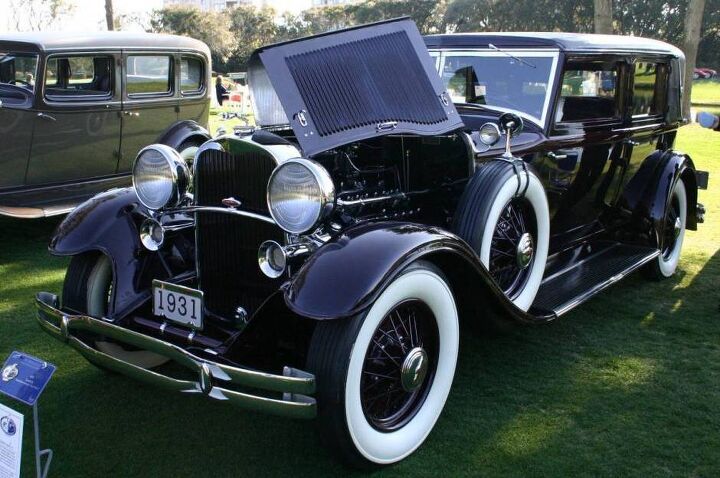

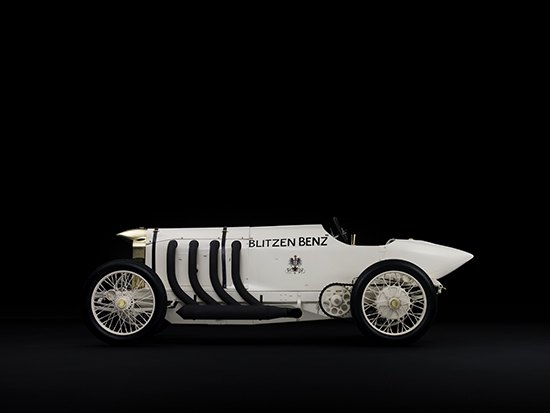








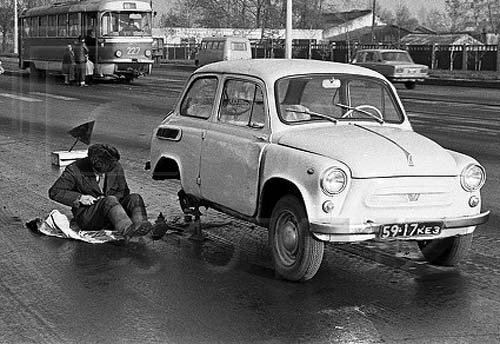
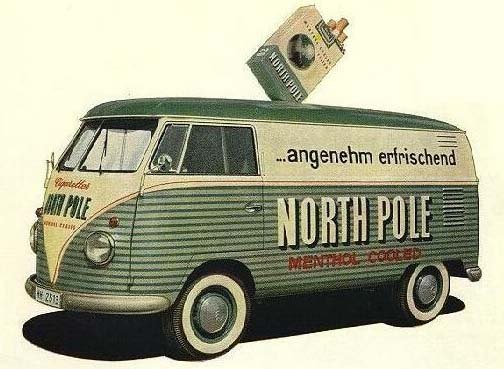


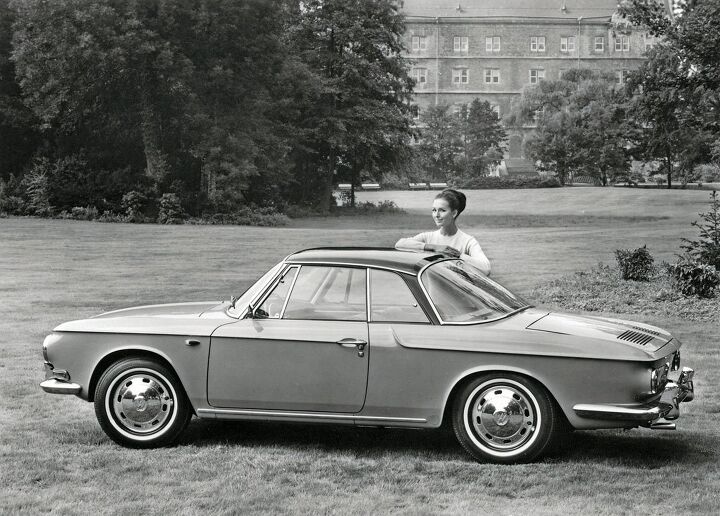







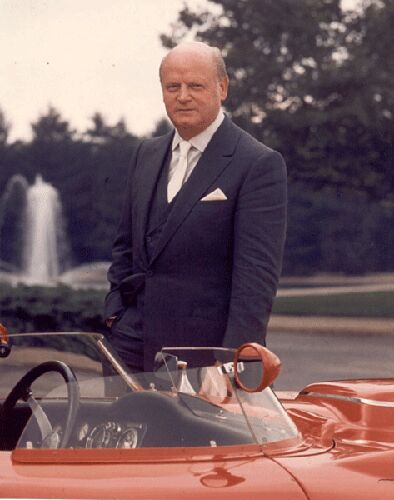



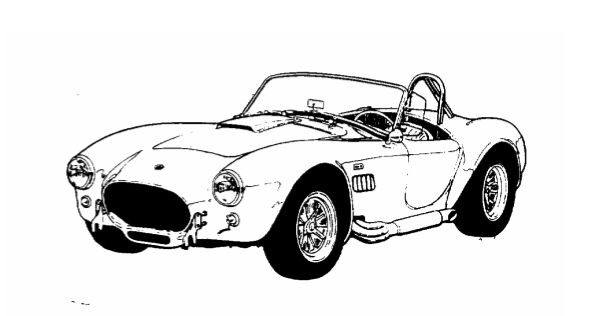







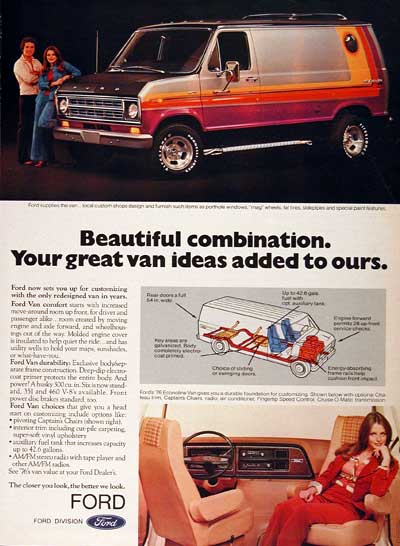
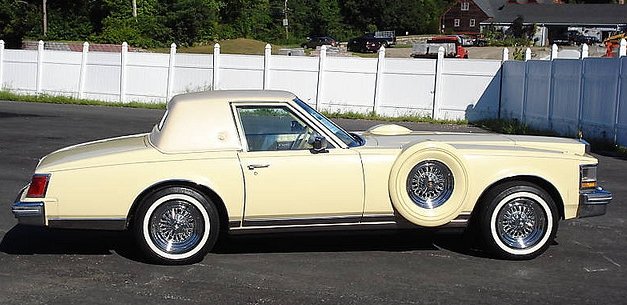


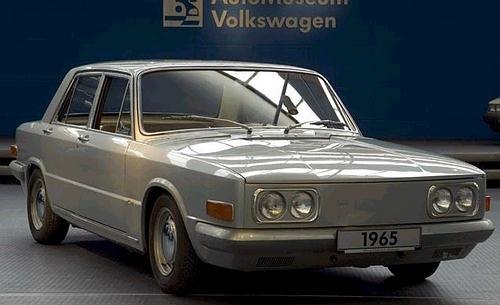



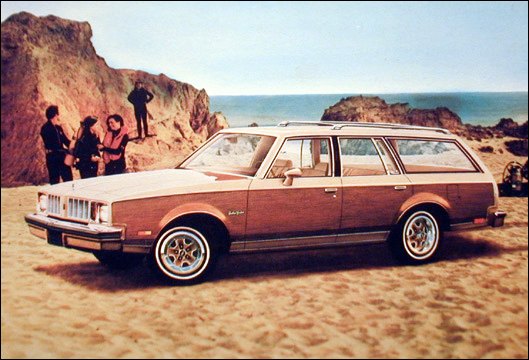

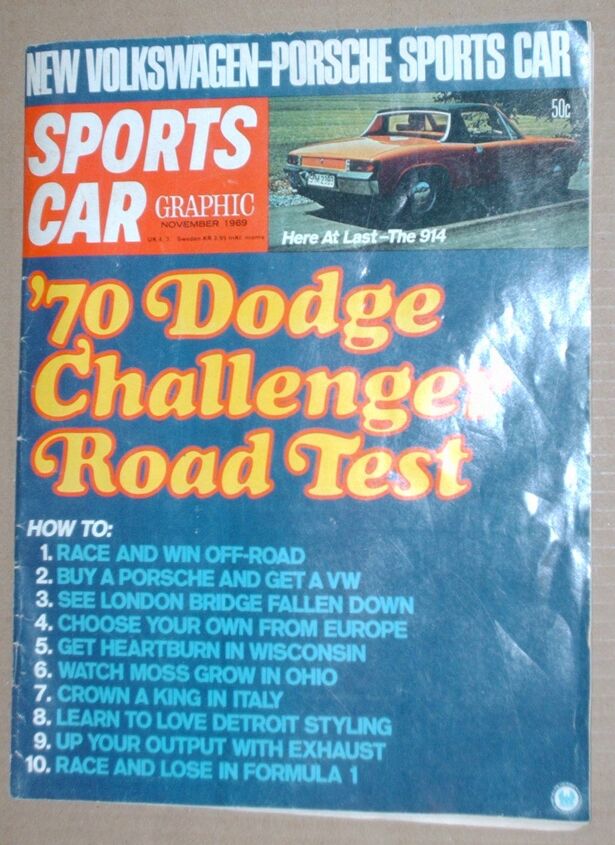





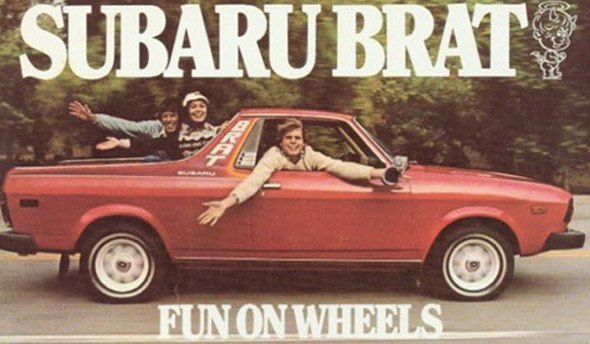













Recent Comments